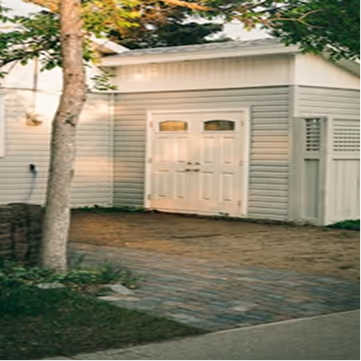Laying a Strong Financial Foundation Before Your Home Acquisition
Embarking on the journey to buy a home is an exciting milestone, but it requires thorough financial preparation. Understanding and managing your finances effectively can significantly enhance your chances of securing favorable mortgage terms and making informed decisions. This guide outlines essential steps—from credit management to documenting your assets—that will help you position yourself as a confident and capable borrower.
Assess and Improve Your Creditworthiness
 Before applying for a home loan, you should start by reviewing your credit reports early. This helps you identify any errors or inaccuracies that could negatively impact your credit score. Obtain a free report from AnnualCreditReport.com and carefully examine each detail. If you find mistakes, dispute them promptly to ensure your credit profile is accurate.
Before applying for a home loan, you should start by reviewing your credit reports early. This helps you identify any errors or inaccuracies that could negatively impact your credit score. Obtain a free report from AnnualCreditReport.com and carefully examine each detail. If you find mistakes, dispute them promptly to ensure your credit profile is accurate.
Monitoring your credit regularly is also essential. Keeping an eye on your credit status allows you to address issues such as late payments or high credit utilization that could hinder your mortgage chances. Making consistent, on-time bill payments significantly boosts your creditworthiness.
Practical steps include paying bills on time, reducing your credit utilization ratio below 30%, and avoiding opening new credit accounts just before your application. These actions help improve your credit score and demonstrate financial stability to lenders.
In addition to credit behaviors, assess your overall financial health. Track your expenses to develop a realistic home-buying budget, save for a substantial down payment, and reduce existing debts to lower your debt-to-income ratio. Gathering essential documents, like tax returns, bank statements, and proof of income, streamlines your mortgage application.
Evidence-based preparations such as these increase your chances of securing favorable loan terms, such as lower interest rates and higher loan amounts. Consulting with mortgage professionals can further guide you on the best strategies to enhance your credit and financial profile for homeownership.
| Step | Actions | Purpose |
|---|---|---|
| Check credit report | Obtain free report; review for errors | Ensure accurate credit information |
| Dispute inaccuracies | File disputes for any errors found | Correct credit data to improve score |
| Timely payments | Pay bills consistently and on time | Build positive credit history |
| Manage credit utilization | Keep utilization below 30%; avoid new debt | Maintain a healthy credit score |
| Gather documents | Collect income, bank, and tax records | Prepare for mortgage application |
| Reduce debts | Pay down existing debts, especially credit card balances | Improve debt-to-income ratio |
| Monitor regularly | Review credit reports periodically | Maintain good credit standing |
To explore further, search for "how to check and improve credit scores and reports for mortgage readiness," which offers numerous tips on boosting your credit profile and preparing financially for homeownership.
Plan Your Savings and Down Payment Strategy
 Understanding how much to save for a down payment is a vital step in preparing for homeownership. Start by determining the purchase price of your ideal home. Once you have that figure, estimate the down payment required, which typically ranges from 3% to 20% of the home's price depending on the loan type and lender requirements.
Understanding how much to save for a down payment is a vital step in preparing for homeownership. Start by determining the purchase price of your ideal home. Once you have that figure, estimate the down payment required, which typically ranges from 3% to 20% of the home's price depending on the loan type and lender requirements.
Developing a systematic savings plan is crucial. Set clear milestones and deadlines, and consider employing disciplined strategies such as automatic transfers from your checking account to a dedicated savings account. This automation helps ensure consistency and prevents impulsive spending.
It's also beneficial to explore assistance programs, grants, and gift options that can supplement your savings. Many government and local programs offer down payment assistance, especially for first-time buyers, or you might consider asking family members for gift funds if that’s an option.
To avoid mixing funds, keep your savings for the down payment separate from your regular savings or emergency fund. Maintaining distinct accounts prevents accidental expenditure of your home-buying stash and ensures funds are available when needed.
Regularly reviewing your expenses helps identify areas where you can cut back. Small savings from eliminating discretionary spending or earning extra income through side jobs can accelerate your savings process.
Breaking down your savings goal into smaller, manageable milestones can keep you motivated. Adjust your plan as needed based on your evolving circumstances to stay on track for your target purchase date.
By adopting a focused approach, you prepare yourself financially for the home buying process and lay a strong foundation for sustainable homeownership.
Understand and Manage Additional Homeownership Expenses
How should I plan for additional homeownership costs beyond the mortgage payment?
Owning a home involves more than just paying the mortgage each month. To ensure financial stability and preserve the value of your property, it’s important to budget for ongoing expenses such as property taxes, homeowner’s insurance, and utilities. These costs can add significantly to your monthly outlay and should be incorporated into your homeownership plan.
In addition to these, routine maintenance and repairs are inevitable. This can include landscaping, appliance repairs, and systems like HVAC, plumbing, and electrical upgrades or replacements. Estimating these costs yearly helps prevent surprises and allows for better financial planning.
Initial expenses are also crucial to consider. Closing costs, which typically range from 2% to 5% of the home’s purchase price, moving costs, furniture, and any necessary home upgrades or renovations should be factored into your budget.
Maintaining a dedicated emergency or reserve fund is vital. This fund can cover unexpected costs such as pest control, mold remediation, or urgent repairs that may arise after move-in. Experts recommend setting aside at least 1-3% of your home’s value annually for maintenance and repairs.
By planning ahead for these various costs, you can enjoy your home comfortably without financial stress. Proper planning also helps in maintaining the safety, functionality, and long-term value of your property, making homeownership a rewarding experience.
Calculate and Optimize Your Debt-to-Income Ratio
What are typical debt-to-income ratios required for mortgage approval?
Most lenders look for a debt-to-income (DTI) ratio of 36% or less as a standard for approving a mortgage. Some loan programs, such as FHA loans, may accept ratios up to 43%.
The DTI ratio is split into two parts:
- The front-end ratio, which includes housing expenses like mortgage payments, property taxes, and insurance. Lenders prefer this to be below 28% of your gross income.
- The back-end ratio, which considers all monthly debts, including credit cards, car loans, student loans, and other obligations. Ideally, this should stay below 36%.
In some cases, conventional loans allow ratios up to 36%, but there are exceptions where ratios as high as 50% can be approved if you have strong credit and financial stability.
For government-backed loans:
| Loan Type | Max DTI | Typical Requirements | Additional Notes |
|---|---|---|---|
| FHA | 43% | Usually 31% for housing | Flexibility with credit scores |
| USDA | 41% | Often 29-41% | Depends on income and property |
| VA | 41% | Can be higher with compensating factors | No minimum credit score |
Maintaining a lower DTI improves your chances of approval and can lead to better interest rates. To enhance your DTI ratio, focus on paying down existing debts, increasing income where possible, and avoiding new debt before applying for a mortgage.
Select the Right Mortgage and Prepare for the Application
How can I explore and choose the best mortgage options and lenders?
Finding the right mortgage involves thorough research and comparison. First, evaluate your financial situation by checking your credit score, debt-to-income ratio, savings, and overall budget for homeownership.
Next, look into different types of mortgage loans—such as fixed-rate vs. adjustable-rate mortgages—and understand their terms, benefits, and risks. This helps determine which loan type aligns with your financial stability and risk tolerance.
It’s important to gather multiple loan estimates from a variety of lenders, including banks, credit unions, mortgage brokers, and online lenders. Request these estimates early, and review the details carefully, paying close attention to the interest rate, closing costs, points, fees, and the total cost over the loan term.
Comparing these offers within three days of application ensures you can evaluate which provides the best overall value. Don’t forget to consider the lender’s reputation, customer service, and flexibility on loan terms. These factors can significantly impact your homebuying experience.
Pre-approvals or pre-qualifications from multiple lenders are valuable as they give you clarity about your borrowing capacity. They also demonstrate your seriousness to home sellers.
Through this comprehensive approach, you can confidently pick the mortgage and lender that best meet your needs, helping you secure favorable loan terms and manage your finances effectively.
Final Steps Toward a Secure Home Purchase
Preparing your finances thoroughly before applying for a home loan lays the foundation for a smooth buying process and better mortgage terms. From checking your credit report to understanding your total expenses and selecting the right lender, each step enhances your readiness and confidence. By maintaining financial stability, optimizing your credit profile, and planning adequately for homeownership costs, you position yourself as a responsible borrower. This proactive approach not only increases your chances of approval but also secures better interest rates and loan conditions, paving the way for a successful and stress-free homeownership journey.
References
Latest Blog


Get Pre-Approved Today
Start your secure online application now so you can get pre-approved for a mortgage (and close on your dream home) quickly within 5 minutes.









